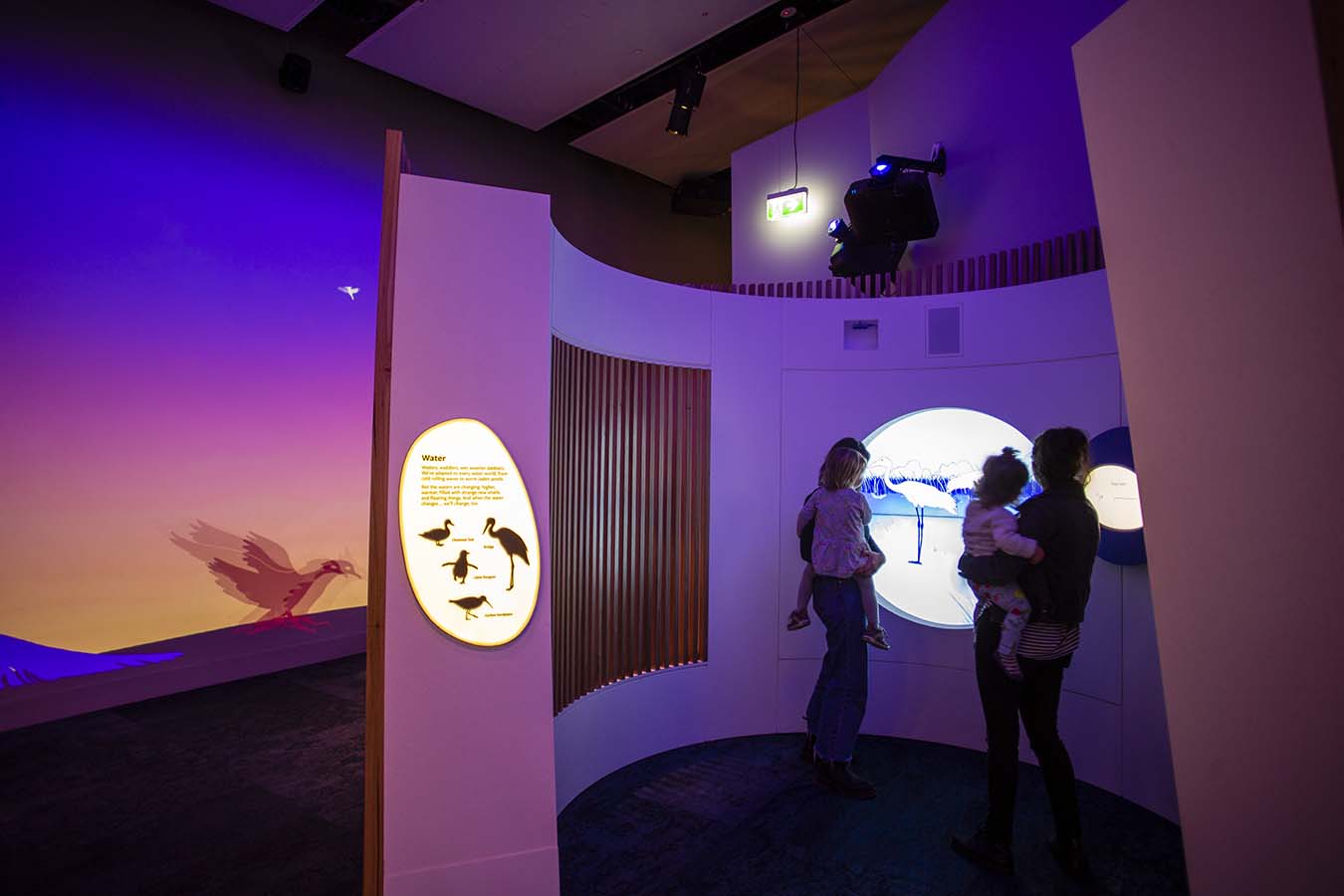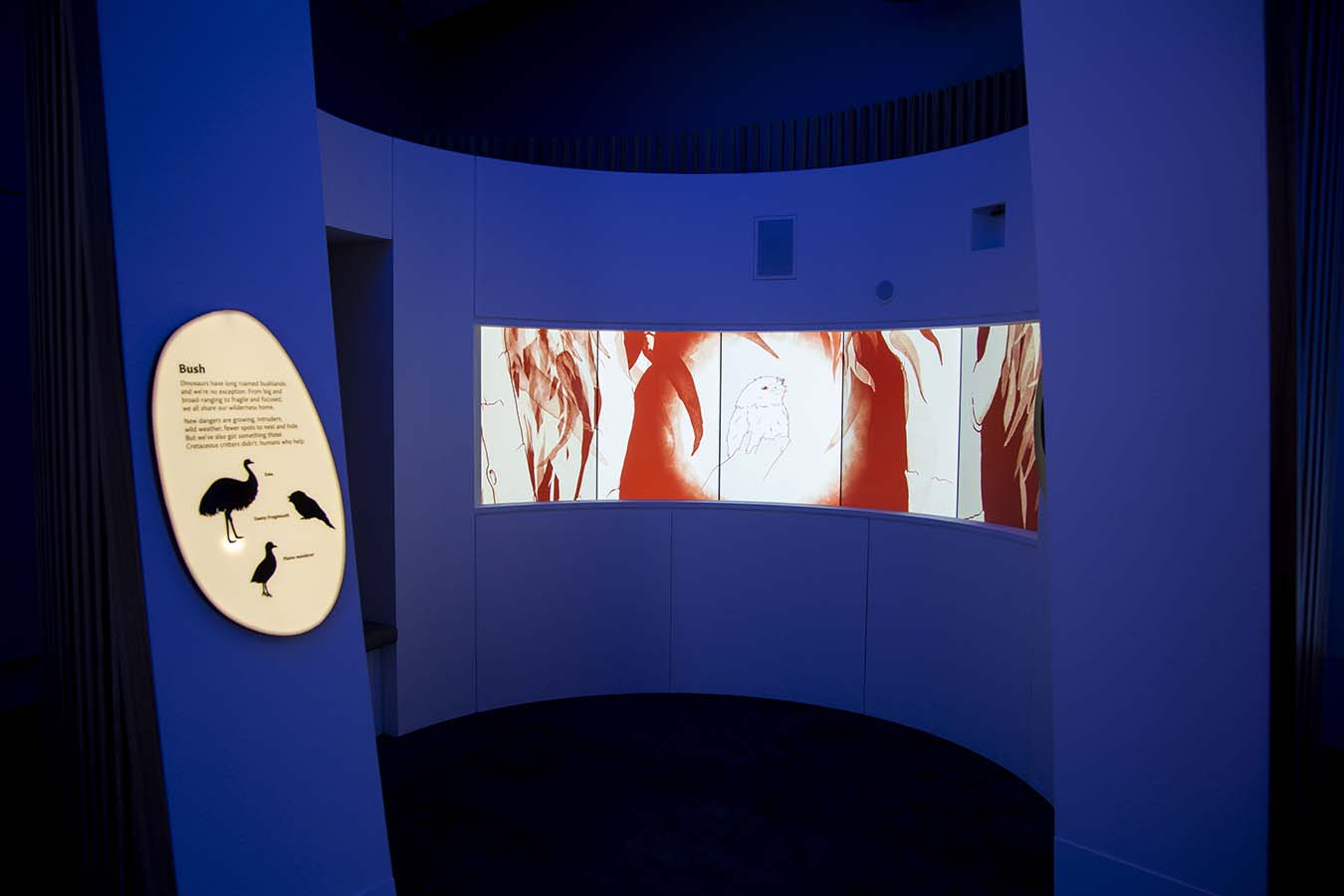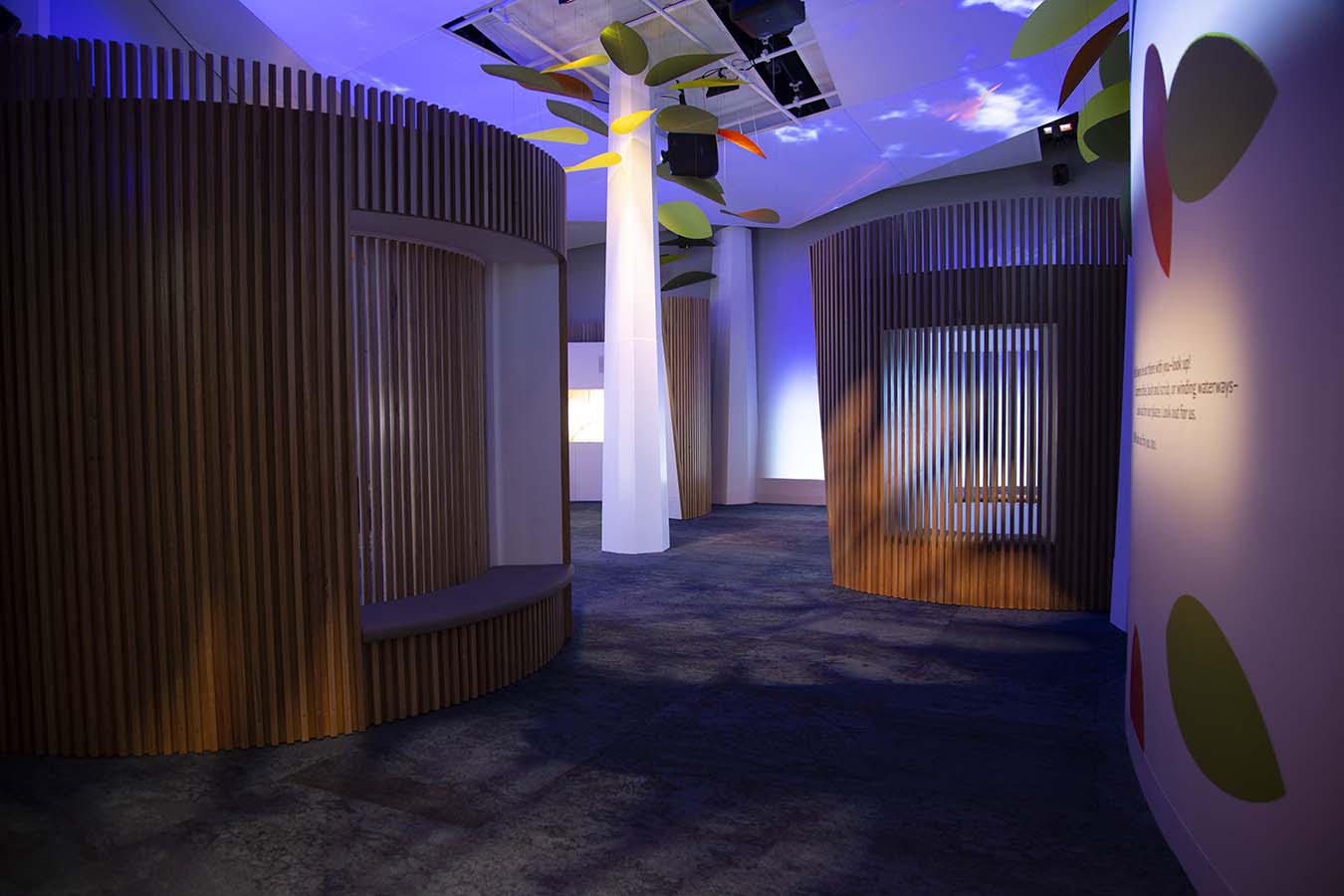Horridus: Act 3 was developed through iterative design processes in both digital and physical design aspects of its creation. Its design development involved: workshop sessions with clients to define the project's goals, user research, concept ideation, prototyping, user testing in order to fulfil UX considerations (customer journey maps, target audience and personas accessibility considerations analysis).
Based on user testing results, the project was further refined and implemented for real world testing and interaction. Given the project's ambitious nature, the journey to completion has brought on its fair amount of challenges. Due to the intended duration of this experience, which is a minimum of 15 years, the exhibition had to be constructed with robust structures, hardware and software in mind.
Hundreds of people interact with this exhibition everyday, therefore days of testing on all fronts were involved in the experience's development. Iterative testing involving camera depth sensors, as well as voice recognition testing within a space immersed in bird calls and crowds at all hours of the day was imperative to the quality of the user experience of the exhibition. In addition to the challenge that is the robustness of the experience, the development of this exhibition asked us to adapt to the new normal that is living with COVID 19.
The team devoted time and work to making sure this exhibition would be COVID safe, specifically around the voice recognition section of this experience. To adapt to this challenge, a directional microphone was hidden within the walls. Rigorous testing regarding position, volume and distance was performed in order for the visitors to remain a safe distance away from surfaces.





